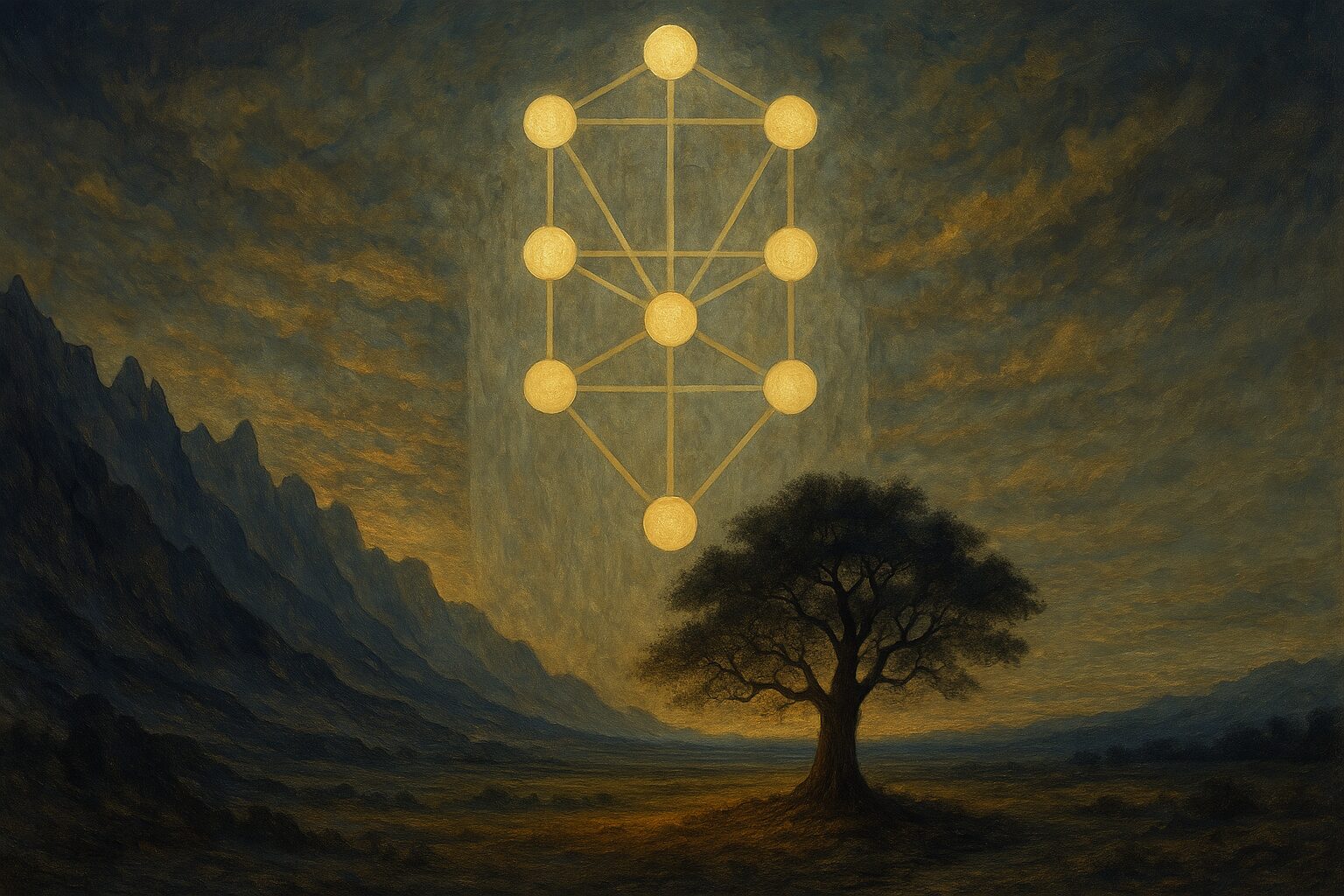“All the worlds are contained in Malkuth, and yet Malkuth is only the threshold.”
At the base of the Kabbalistic Tree of Life lies Malkuth, the Kingdom. It is the sphere of earth, embodiment, manifestation. If the Tree is a ladder of light connecting the divine with the human, then Malkuth is the ground where the ladder touches down—the entry point of spirit into form, and vice versa.
To live in Malkuth is to live in this world—a realm of gravity, time, limitations, and flesh. And yet, it is not a dead end. It is a gate. The Kingdom is not separate from the Divine—it is the Divine made dense.
The World as Symbol
Malkuth is not simply “the material world” in the mundane sense. In mystical thought, matter is a mask worn by higher energies. The ancient Hermetic maxim, as above, so below, finds its most dramatic expression in Malkuth, where the divine blueprint manifests in texture, pattern, decay, and beauty.
To perceive this world rightly is to see through the veil—to look at a tree and sense the Sephirot flowing through it; to feel the pulse of the higher spheres in the falling of rain or the breath of a sleeping child.
Malkuth teaches us that even dust has divinity.
The Exiled Shekhinah
In Jewish mysticism, Malkuth is often associated with the Shekhinah, the feminine presence of God in the world, who is said to be in exile. She dwells in the darkness of matter, waiting to be reunited with the source. Every act of compassion, creativity, or awareness becomes a tikkun—a rectification, helping to restore divine balance.
Thus, to live in Malkuth consciously is to be a priest of restoration—turning bread into sacrament, routine into ritual, life into liturgy.
Between Two Worlds
The mystic’s task is not to escape Malkuth but to sanctify it. It is tempting, especially for those on spiritual paths, to reject the body, the world, and its pain. But this is not the way of the Tree. Malkuth must be embraced, not transcended. It is not the illusion—but how we perceive it can be.
The Veil of Malkuth is the illusion of separation. When lifted, we see that there is no world apart from spirit—only spirit in disguise.
The Path of Awakening in the Kingdom
Every tradition has its “earth path” teachings:
- The Buddhist finds dharma in washing the bowl.
- The Sufi whirls to bring the divine into the body.
- The Christian mystic sees Christ in the poor and the suffering.
- The Hermeticist traces the macrocosm in the mineral and plant.
These are all echoes of Malkuth’s great truth: the Kingdom is holy.
A Call to the Present
Malkuth calls us to presence—to feel the ground beneath us, the wind on our face, the stillness behind movement. It is here, in this breath, this room, this body, that the divine speaks.
Not in thunder. In bread.
Not in visions. In laundry.
Not in abstraction. In contact.
Closing Reflection:
To live at the edge of the Tree is not to be far from the Divine, but to be its final expression. The distance is only in our minds. In truth, the Kingdom is within.
And every step we take on the earth can be a step into the sacred—if only we remember to look.

